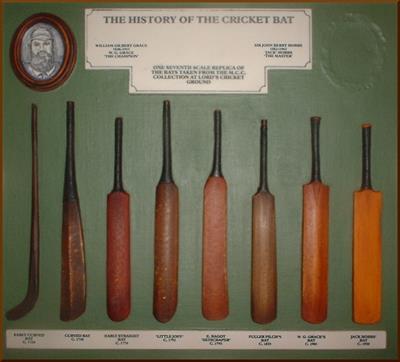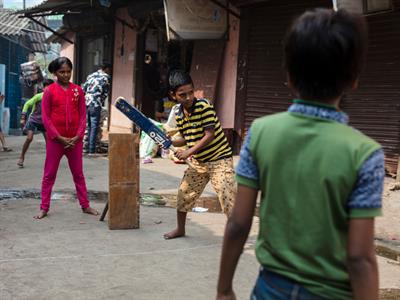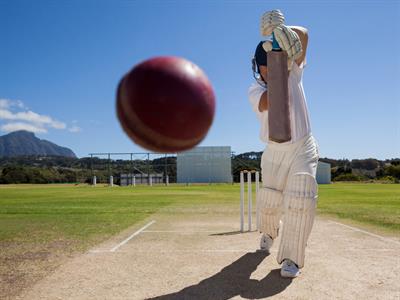
PUMPA - SMART LEARNING
எங்கள் ஆசிரியர்களுடன் 1-ஆன்-1 ஆலோசனை நேரத்தைப் பெறுங்கள். டாப்பர் ஆவதற்கு நாங்கள் பயிற்சி அளிப்போம்
Book Free Demo Cricket grew out of the many stick-and- ball games played in England 500 years ago. The word ‘bat’ is an old English word that simply means stick or club. By the seventeenth century, cricket had evolved enough to be recognisable as a distinct game. Till the middle of the eighteenth century, bats were roughly the same shape as hockey sticks, curving outwards at the bottom. There was a simple reason for this: the ball was bowled underarm, along the ground and the curve at the end of the bat gave the batsman the best chance of making contact.
One of the peculiarities of cricket is that a Test match can go on for five days and still end in a draw. No other modern team sport takes even half as much time to complete. A football match is generally over in an hour-and-a-half. Even baseball completes nine innings in less than half the time that it takes to play a limited-overs match, the shortened version of modern cricket!
Explanation:
Ramachandra Guha, being a cricket Historian, traces the origin of the game and explains its uniqueness in the lesson. He notes that cricket can be traced back to the early games that were played in England around \(500\) years ago. This can be attributed to the fact that the British had colonised nearly half the continent in the early \(1800s\). The British had entered India right after the Dutch and Portuguese initially to trade spices and other valuables. The East India Company, which was formed to trade, was handed over to the crown. Slowly they started taking control and India was fully colonised by the end of \(1853\). The British culture, interests, etiquettes were deeply forced on the Indian people. Cricket, which was by then a famous sport in England, was introduced to Indians. Indians started establishing teams and played amongst each other.

Oldest cricket bat*
Cricket in England was brought in by early Dutch and French settlers around \(500\) years ago. It was initially played with sticks and very little equipment. It was initially played by young boys from lower strata and exiles. Since it was played with sticks and clubs, instead of the bat that is being used now, the word 'Bat' is derived from the 'Batte', which is old English for stick or 'Battre', which means to strike. For a long time, till the eighteenth century, the cricket bat looked almost similar to a hockey stick, as it had a curve towards the end. Like hockey, the ball was not thrown in the air; instead, it was rolled over in the ground. In today's cricket, the bowler pitches a ball to the batsman, which he hits with the bat.

Evolution of the cricket bat**

Cricket in a non-formal scenario

Ball pitched in the air
Meaning of difficult words:
| S.No | Words | Meaning |
1 | Peculiarities | Something that is not normal, Strange |
2 | Bowled Underarm | Rolling the ball towards the ground, without throwing in air |
3 | Draw | Each team scoring the same |
4 | Baseball | A game that is similar to cricket, but the batting team has to run towards a base, which the opponent tries to prevent |
5 | Innings | The duration in which one team takes to bat |
6 | Overs | Six balls bowled towards the batsman at one stretch |
Reference:
National Council of Educational Research and Training (2007). Honeycomb. The Cricket Story- Ramachandra Guha (pp. 139-151). Published at the Publication Division by the Secretary, National Council of Educational Research and Training, Sri Aurobindo Marg, New Delhi.
Oldest cricket bat*: Rodrigo, CC BY-SA 3.0, Wikimedia
Evolution of the cricket bat**: Bodnotbod, BY-SA 3.0, Wikimedia